An escape room so bad, I’ll have to give away spoilers in this review of Krakit’s Alice in Wonderland.

About Krakit
Location: Burnaby, near the Lougheed skytrain station
Themes: 4
Players: Recommend 2-3. The size of the Alice room is verging on claustrophobic.
Duration: 45 minutes
Cost: $25 CAD ($19 US) per adult player on most days ($14 special on Tuesdays) and a free game if it’s your birthday. Upgrade your game to “the Hack” for an extra $5 CAD ($3.75 US) if you’d like to see how the puzzles work. It seems that most bookings are presume public unless you opt for a private booking.
Website: http://www.krakit.ca/
Early on in our trip, I had insisted to Ben that a room themed after Alice in Wonderland has to be worth visiting, that the ratings on Yelp and TripAdvisor were four stars and higher. It stood out to me among dozens of rooms that were themed after zombies and crazed killers. The source material is rich with riddles, chess games, colorful characters, and whimsical nonsense – it’s a great theme for an escape room.
As we made the 30 minute drive out to Burnaby, our spirits were high from having just solved Mystery at the Majestic Theater at Find & Seek Entertainment. Despite the cold, rainy weather and lateness of the hour, I felt very excited about the possibilities of the Alice in Wonderland room.
We arrived early and took a seat on one of the Ikea couches in Krakit’s waiting area. As our escape room was being set up, we could hear people bumping and scraping inside one of the other rooms, yelling at each other. I was aware that Krakit had three scary escape rooms (Saw, Zombie Apocalypse, and the Asylum), but this was unexpected.

We were led to the very back of the building by a friendly game host, who explained the room’s storyline as “becoming small, fighting the Queen of Hearts, and finding a way to get big again.” If we needed help at any time during the game (2 hints was the maximum), there was a doorbell on the wall for our convenience.
We were left in the room with the lights off – a pretty interesting start. But as soon we flipped the switches, I almost instantly regretted that decision. Corny, creepy Halloween music (the kind you might hear in a Spirit of Halloween store or a haunted house) blared in my ears. Rainbow party lights swirled around the walls, which were painted in black and chalky glow-in-the-dark neon paint in the style of Disney’s classic animated version of Alice in Wonderland.
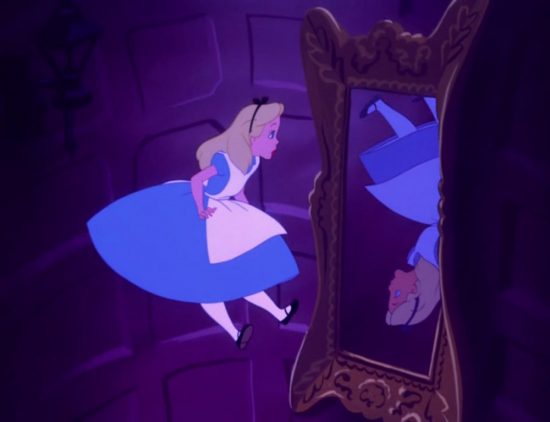
It was now obvious that we were inside a space approximately the size of a walk-in closet. As Ben and I groped the walls for keys and clues, we were constantly bumping into each other. It’s amazing to think they almost booked 2 additional people with us to play inside such a tiny space.
As the minutes wore on, that carnival music really started to affect my thinking – it’s no wonder people can’t figure out this room because they would get a headache or go crazy from listening to that noise. While I can understand a creepy Wonderland (American McGee’s Return to Madness is one of my favorite platformers), this was a pretty awful sensory experience.
At some point, we even made the decision to work in the dark rather than listen to it for a minute longer. However, as soon as we turned it off, we heard the real reason why the music was so loud…to cover up the sounds of the people in the escape room next door.
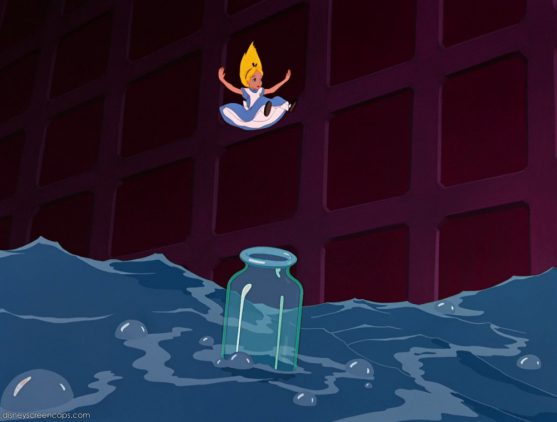
At this point, our motivation to escape the room changed. We finally found the key to a hidden tunnel, which was a neat story moment (“Oh! We’re getting small now!”) that led us to the second room…the room of mechanical nightmares.
There is a lot to look at in this room, including a tea party with spinning saucers on a playing card table, several boxes with combination locks, a television in the ceiling, and a locked wardrobe painted with the portrait of the Queen of Hearts. Most of the set pieces and props felt worn-in, taped together, or assembled in someone’s garage after a binge trip to Home Depot.
I can overlook cheap, chalk paint and cracked tea cups, but I cannot ignore the fact that every single one of these set pieces and puzzles had a mechanical failure.
Locks were worn out, keys became stuck, and the entire time we had no idea if we were doing anything correctly. There were some pretty spectacular failures on the room’s design.
That wardrobe I mentioned, for instance. Opening it reveals a carnival game – you “battle” the Queen of Hearts by chucking dirty toy cupcakes at a series of light switches. There was no way of telling if we were doing what we were supposed to be doing, no response from the room of any kind. Even a light on the switches would have been helpful.
The staff’s solution to the problem was to hit all the switches with a broom handle…which of course isn’t a prop that was available in the room. It was very obvious that past players didn’t think to call the game hosts to help them – they helped themselves by throwing tea cups at the light switches.
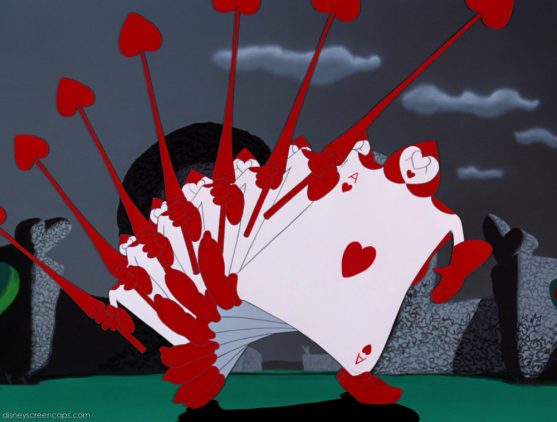
There was another instance at the very end of the game, when we were down to the last few minutes of play. It was a simple word logic puzzle, just the kind of thing that I excel at. Even while writing this review, I can still remember some of the puzzle’s wording (“Alice and Queen must be as far apart as possible, the White Rabbit protects Alice, the Royal Guard must protect the King who must be close to the Queen…”) and how convinced I was in its solution.
When the final puzzle didn’t click, of course I had to try again…and again…and again. We reluctantly called the staff to help us.
“It’s supposed to be this way,” as he arranged the shapes, “Wait, it’s not working? It’s supposed to come out of this pipe…Looks like someone messed it up.” A swift little kick, and the key clatters to the floor.
And that was how we escaped Wonderland.
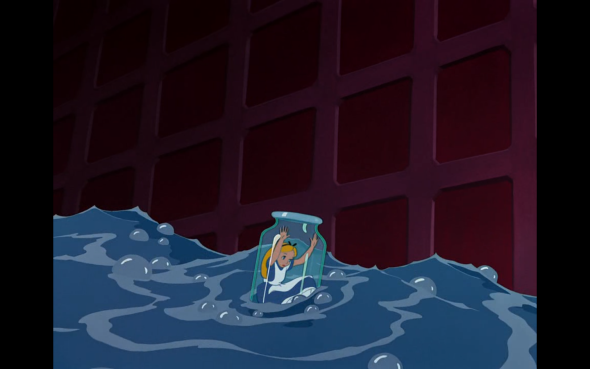
Sometimes, I’ve believed as many as six impossible things before breakfast. One of them is that Krakit still describes their Wonderland as their “newest” escape room on their website. It is very obvious that the room is in a state of serious disrepair. While it may not actually put anyone in physical danger from falling props or sharp edges, the possibility of mechanical failure is so high that it would seriously impede any real progress through the room.
It was also obvious that the staff did not take our gaming experience seriously. We weren’t being monitored on-camera. This might not seem like a big deal to some of you, but imagine this:
- Every time Ben and I rang the doorbell for help, we had to wait at least 30 seconds for someone to walk down the hallway.
- The game host would enter the room and we spend 2+ minutes explaining what just happened.
- Maybe it’s a mechanical failure. Maybe we just need a hint. It still takes us at least 5 minutes to get anything resolved before we move onto the next puzzle.
The experience of waiting for help already sucks, but it’s worse when you’re waiting for someone who seems slightly irritated that you took them away from the front desk. I remember one moment when Ben used the tunnel to get in-between the rooms. The game host’s response was, “Uh, you know you can go through the normal door, right?”

Comments like that broke the immersion, at times even sounded condescending to us as players (“Did you know that you solved those puzzles out of order? It’s supposed to go like this.”). It broke what little enjoyment we were experiencing in this room and show us how inflexible and how poorly designed it was.
Even if I were to look past the mechanical failures, the internal logic and flow of the room did not work well. For a very linear room, it felt very haphazard. Combination locks and hidden keys were in abundance, which for me doesn’t make much sense in the world of Wonderland. There was some attempts at story logic puzzles, but they were very shallow, one-time experiences (the Cheshire Cat gives us a riddle to unlock a combination – why should we care?).
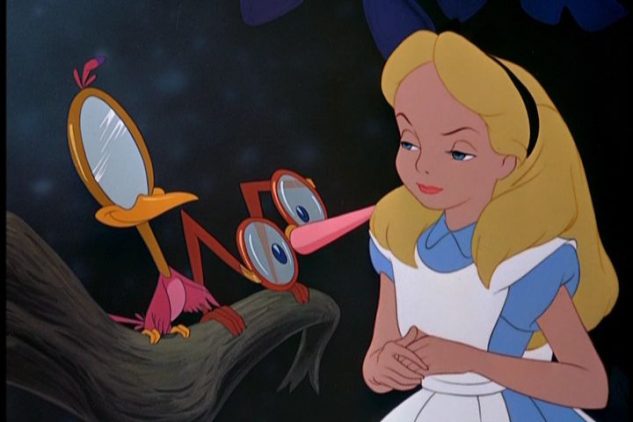
We were somehow expected as players to follow some hidden checklist, knowing what to do and when to do it according to script. We weren’t allowed to play with with what the room had to offer. As I mentioned in my previous review of Mystery at the Majestic Theater, escape room designers have to take into account that some players may choose to deviate or accidentally solve puzzles out of order.
How do you adjust and can your room adjust to that? If it can’t, there should be some mechanics in place or ways that staff can guide players to the “correct” path. These can be simple, non-digital things, like voice commands through walkie talkie or using puzzles with guided logic.
The Krakit staff may have been helpful with hints and had tried to assist us through the mechanical disasters, but there was something very wrong with the way they were doing it. It felt like they were just doing their customer service job, not invested (or interested) in what it means to create a great player experience. Even their attitude about the broken puzzles and locks was astonishingly nonchalant: “If it doesn’t work, you just have to give it a good kick.”
With a response like that, the experience starts to feel like a cheap rip-off of other, more successful escape rooms. I honestly wanted to like Krakit, even pushed to visit it in the first place. If there was a little bit more care from the company regarding the quality of its rooms and gaming experiences, then it might be worth visiting again, but at the moment it stands as one of the worst escape room experiences I’ve ever had.
Summary
CONCLUSION
While it may have been a great room when it first opened at Krakit, the Alice in Wonderland room needs to retire due to the high occurrences of mechanical failure and poor puzzle design. I would not recommend it at all, even if you were to treat this room as a game and not as an immersive experience.
While we had a very terrible experience with the Alice in Wonderland room, I do want to point out that the majority of Krakit’s escape room offerings are in the horror category. As Ben pointed out, “Would you judge a movie theater based on the fact that you saw a bad movie there?”
As much as I try to judge each escape room individually, it’s hard to ignore that the fact that the staff members at Krakit did not really care about our gaming experience. It would be take a lot of convincing for me to return there.
Story Immersion: 1/5
- The room relied heavily on literal depictions of Alice in Wonderland characters to create the setting, but told nothing about its story.
- Most of the props and set pieces felt like they were made in a garage and in 1 trip to Home Depot.
- The game hosts made very little effort to create immersion.
- Some props and set pieces supported the theme, though most of them had obvious signs of wear or needed repair.
- Some puzzles were inspired by the theme and could have been fun if they had worked properly.
- Some puzzles seemed very out of place with the theme.
Player Experience: 1/5
- Their hint system wastes precious time, impedes players’ progress, and breaks immersion.
- Bad music is one thing, but to cover up the noise made by people who aren’t even involved in your game is the worst.
- Does the game host actually want you to succeed?
- I literally wanted to leave halfway through the game.
Technical Performance of Props/Sets: 1/5
- Worn out locks.
- Missed digital/mechanical triggers.
- I can count on 1 hand how many puzzles actually worked correctly and triggered appropriately.
- For several puzzles, there were no visual/audio cues to tell us if we had solved a puzzle correctly.
- Definitely not wheelchair accessible and potentially claustrophobic.
-
Overall Score

